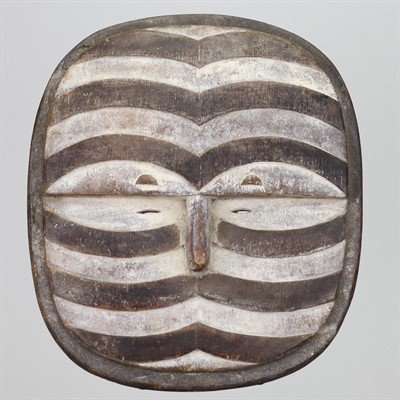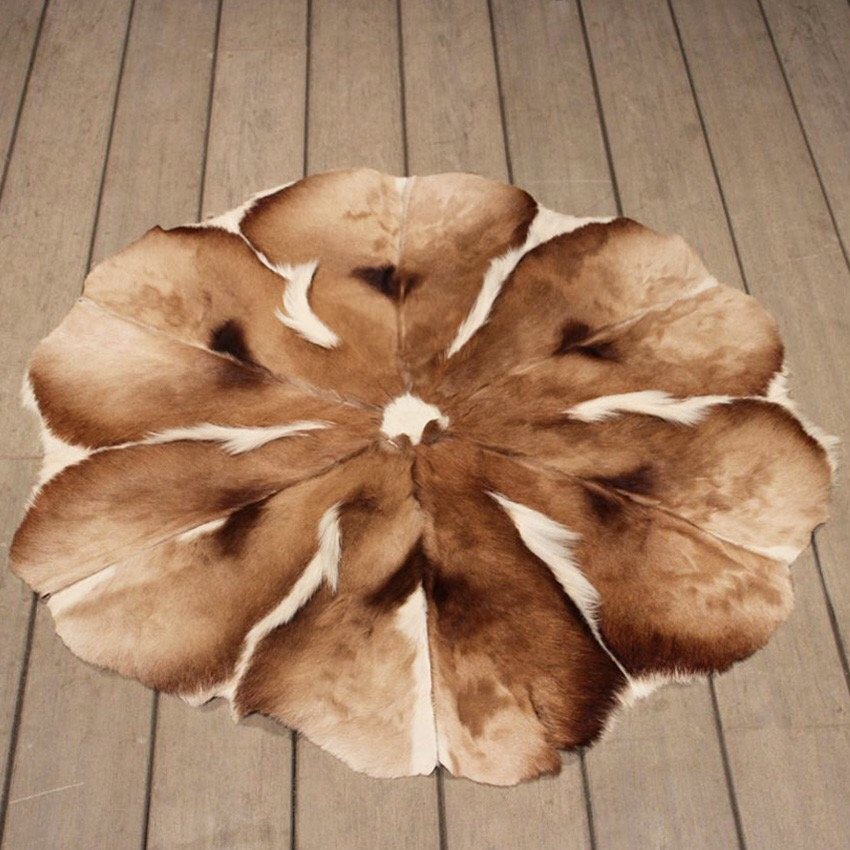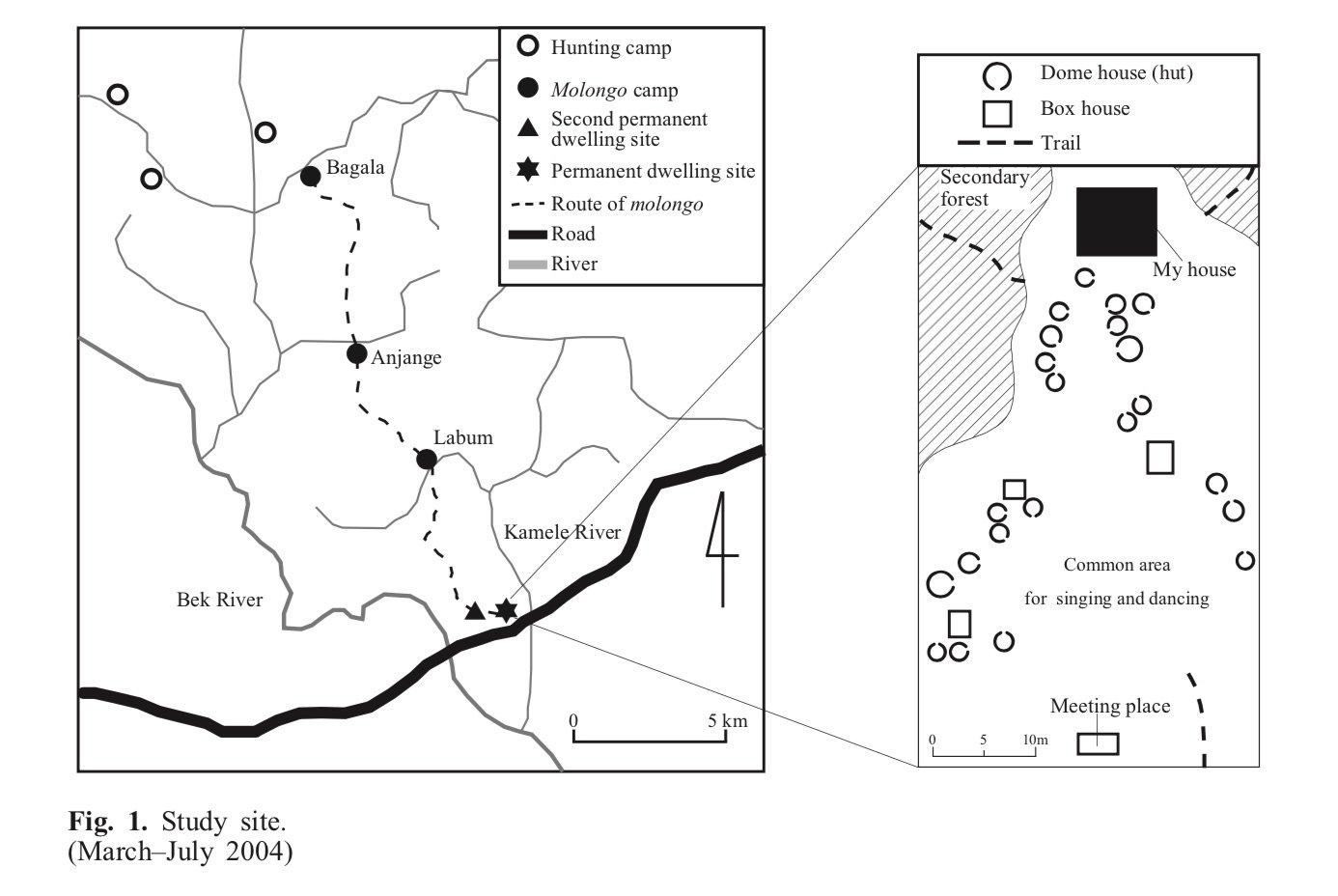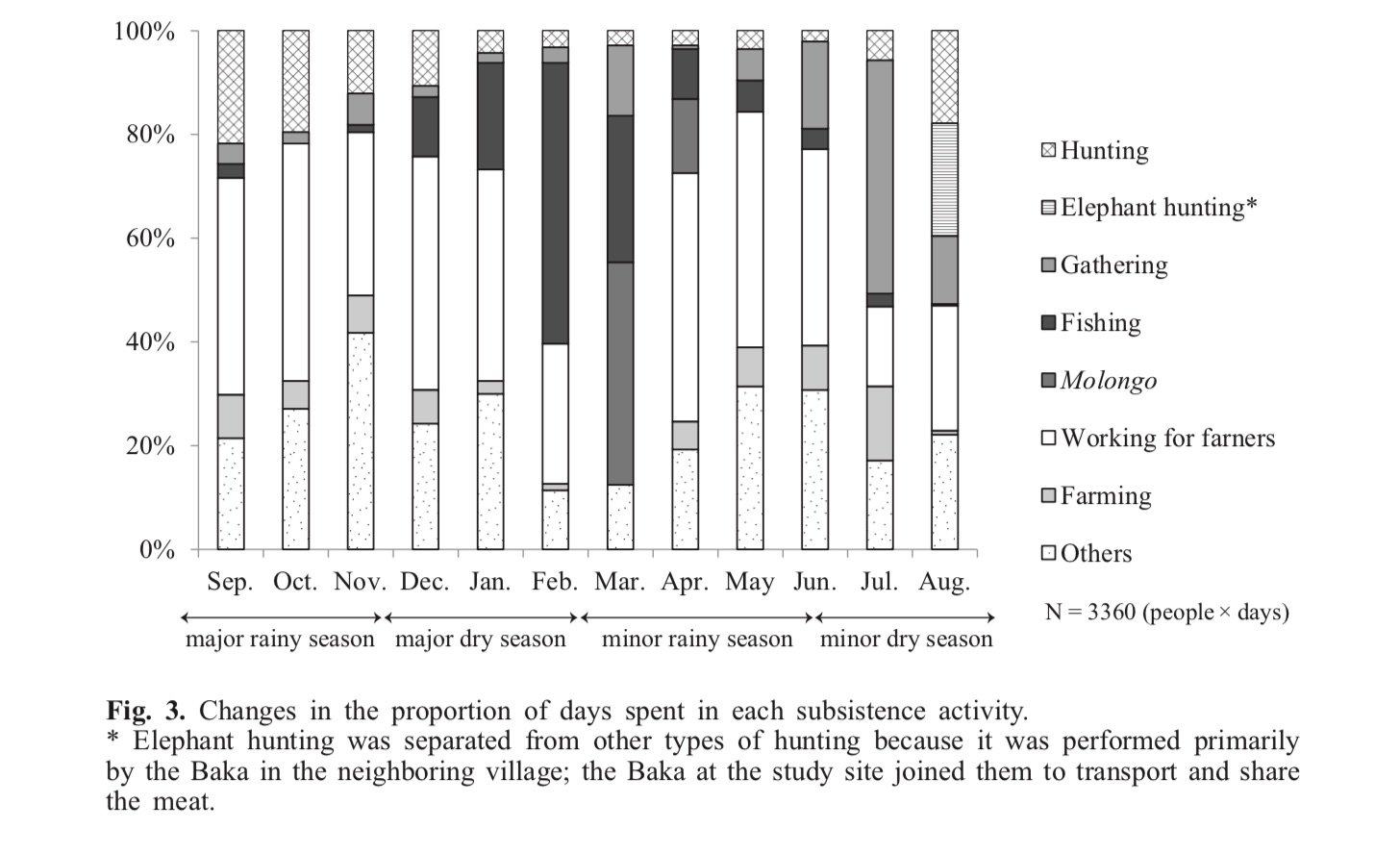Conheça a Máscura da Lua da Etnia Teke
MASCARA FEITA A MAO EM MADEIRA SIMBOLIZA A LUA NA ETNIA TEKE. ORIGEM GABÃO E CONGO.
A máscara Teke é redonda, com motivos geométricos abstratos, com listras horizontais pintadas com fundo branco ou vermelho e pintadas na parte superior com tons de terra escuros como azul, preto e marrom. Essas listras são dispostas simetricamente ao longo do eixo vertical e horizontal da máscara e retratam um rosto humano.
A máscara Teke é originária da região de Ogowe superior na República Democrática do Congo e no Gabão. Essa máscara é usada para confirmar a estrutura social e política durante as cerimônias de dança de máscaras Kidumu.

As tribos Kidumu que fazem essa máscara têm valores espirituais muito fortes e a família era a mais importante. unidade social da tribo Sob a cabeça do homem de família, ele tem o direito à vida e morte sobre todos os membros da família e, portanto, a tendência de possuir muitos escravos e controlar a vida dos outros à medida que aumenta seu poder e reputação Em termos de vida espiritual do Teke, o chefe da aldeia foi escolhido como líder religioso, ele era o membro tribal mais importante e ele manteria todas as poções e ossos espirituais que seriam usados em cerimônias tradicionais para falar com os espíritos e governar. segurança sobre o seu povo.

Cada máscara é uma obra de arte “”original””, individualmente esculpida à mão. A natureza original da arte tribal será refletida por variações da máscara Tek, cada peça tem um estilo específico é semelhante, nunca sendo idênticas às outras.
As máscaras de nossa coleção foram feitas para o comércio e não possuem furos ao redor de sua borda, através dos quais as fibras seriam presas para segurar a máscara no traje ou na testa, caso fossem usada para ritual.














